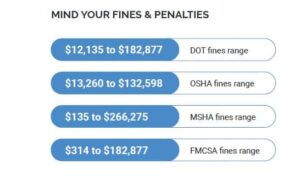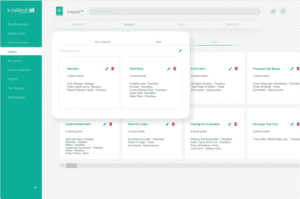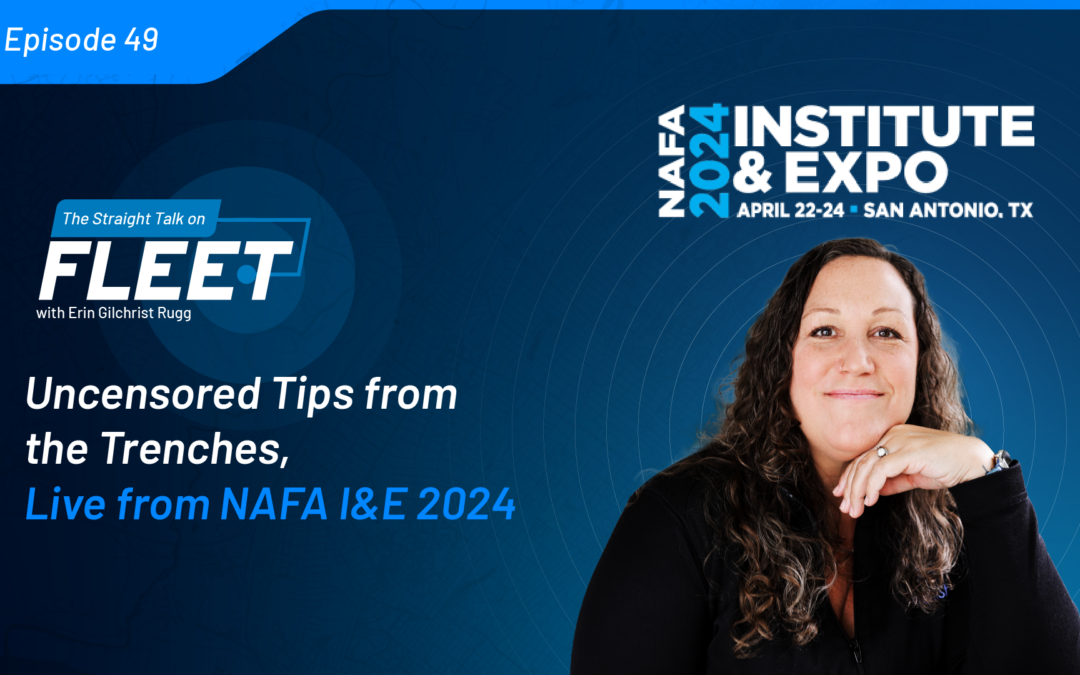Are your paper inspection reports becoming a burden for your organization? Filling out a paper form every time you begin a set of work can feel like a tedious waste of time. Inspections are often not done properly, and the care spent on the forms does not match their importance.
Paper-based inspection forms also cause fleets to lose valuable time, disrupt communication, waste money and limit reaction time. Even done properly, there are still a variety of things falling through the cracks at one point in the process or another.
Is Paper Really So Bad?
Operators don’t always want to spend the time necessary to walk around the vehicle, asset or piece of equipment to carefully check every detail for an issue that wasn’t there yesterday. Paper forms allow operators to pencil whip their way through the process. In other words, they can inaccurately fill out forms based on memory of what happened yesterday or even the week before.
Fleet managers often get put at a disadvantage since these paper logs also deter true accountability. They often won’t hear about an issue until it takes a vehicle out of service.
Accountability also extends to your maintenance team, they need to be accountable by signing off when an issue has been fixed. If your paper process isn’t making this happen, it’s time to move to a digital inspection process.
You need to prevent any issues from snowballing by getting everyone in the loop, and that will not happen with paper processes. Paper inspections lead to unexpectedly out-out-service vehicles and unnecessary costs in two major ways:
- Maintenance issues that could’ve been fixed early or prevented altogether will go unfixed and turn into bigger issues, causing breakdowns, potential safety hazards and decreased business productivity
- Roadside inspections might uncover compliance issues and turn into costly fines and out-out service vehicles

The Numbers Tell the Story
- 15 trucks per minute are inspected in North America
- 20% of roadside inspections result in out-out-service vehicles
- An out-of-service vehicle can cost over $1,000 daily, not including fines or repairs
- Preparing for a DOT audit can take up two days with traditional paper DVIR
- Roadside inspections and programs can prevent an estimated 14,000 accidents and 9,000 injuries in a year
Why are Digital Inspections Your Best Preventative Maintenance Strategy?
Digital inspections offer the potential to provide everything you need to connect two disparate processes such as a maintenance and inspection, which only offers upside.
With automated, real-time alerts, maintenance managers can initiate service requests the moment an issue is spotted during an inspection, allowing them to run both a responsive and truly preventative maintenance process. Getting ahead of issues before they snowball into bigger problems not only prevents unnecessary maintenance spend but also allows leaders to better manage vehicle, asset, and equipment availability by preventing unexpected downtime and lost productivity.
If your inspections solution is part of a connected vehicle and asset operations platform, having your inspections data integrated with your vehicle service data such as engine diagnostics, mileage and more provides additional insights to help maximize your operations, assets, workforce and budget.
Your operations are built on consistently moving parts. Paper isn’t cut out for key processes such as daily inspections.
Not All Digital Solutions Are Created Equal
Not all solutions are going to offer you the necessary benefits to meet your key goals. These goals include staying in compliance, protecting your drivers and business, and running a proactive maintenance program.
There are certain results you should define ahead of time in order to take them into account during the technology research and selection process. While there may be more, there are five key factors we highlight in our Digital Inspections Buyer’s Checklist eBook. One of these is ease of use for any employee, no matter their technological skill.
According to The Economist in its 2019 Tailored with Technology, Corporate Growth report, technology skills among employees are listed as the second most-cited reason for lack of tech adoption by organizations, behind only security and privacy concerns. If a technology platform is too hard to use, decreasing user adoption, it may not provide the full benefits you are seeking and may not turn out to be your long-term solution.
How Digital Inspections Have Contributed to Saving Lives
The Operations Manager at one of the largest EMS companies in the U.S. uses IntelliShift to increase emergency call volume capabilities by enabling each crew to be ready faster. He has a better picture of his operations now that he has telematics, digital inspections and vehicle service alerts all in one integrated solution.
“It used to take each driver 20 to 25 minutes to conduct inspections,” he said. “Now it takes 10. That gives them 15 extra minutes per shift to take a call. It also reduces overtime for the team ending its shift because they don’t have to wait as long for the next team to be ready.”

The Clear Results
The NY-Based Emergency Service now saves 15 minutes saved per inspection, spends 35% less on maintenance and boasts a 20% increase in inspection completion and accuracy.




![Episode 50 Thumbnail Erin celebrates building the fleet community with 50 episodes and 11K followers on LinkedIn [Podcast]](https://intellishift.com/wp-content/uploads/2020/12/Inspect-Cover-image-1-scaled-1.jpg)



